Maranta is a grassy tropical perennial with bright colorful leaves. When growing in a room, the plant needs to create certain conditions.
Material Content:
Short description
The genus Maranta includes plants with tuberous roots and low (up to 30 cm) erect or creeping shoots. Their main decoration is petiolate wide-oval leaves of a picturesque color. The green background of leaf blades is decorated with a symmetrical clear pattern of red, scarlet or silver veins, spots and stripes. There are exactly 10 spots, so religious people call the plant "10 commandments."
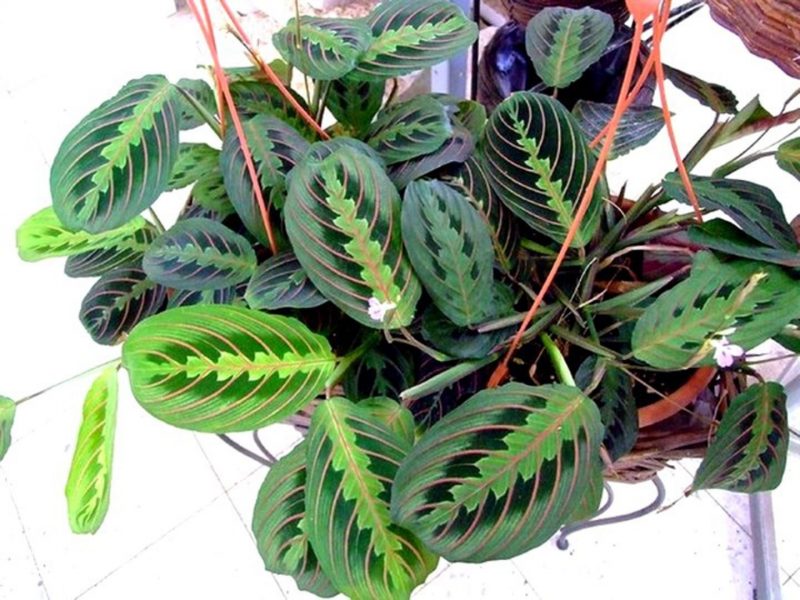
The arrowroot flower is distinguished not only by the unusual color of the leaves, but also by a change in their position depending on the light intensity:
- in the evening they rise almost vertically, the edges slightly twist inward;
- take the usual position in the morning.
This "behavior" of the plant became the reason for the origin of another name - "prayer grass."
In summer, the arrowroot blooms, forming small spike-shaped or paniculate inflorescences of cream, lilac or pink shades. Flowering is short and significantly inferior in its decorativeness to the beauty of the leaves.
Varieties and varieties of arrowroot flowers

The genus unites about 25 plant species that differ in the shape and color of leaves and inflorescences.Some of them served as the basis for new varieties.
White-veined (white-veined) arrowroot
The species combines low (25-30 cm) plants with patterned short-leaved leaves. Their upper dark green side is lined with silver-white stripes. The lower one is grayish-green, with a burgundy tint.
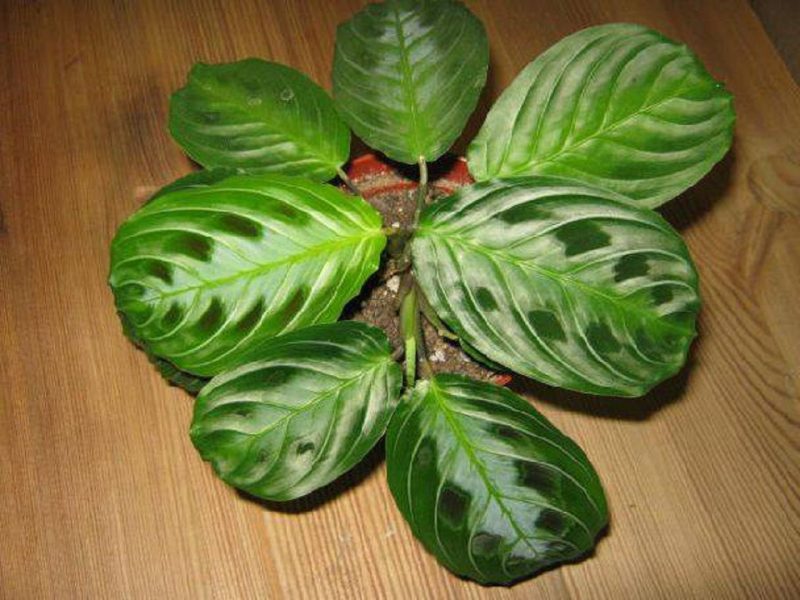
The plant blooms, forming small inflorescences in the form of spikelets or panicles of light shades.
Among the white-veined species, the most popular are:
- Gibb hybrid with violet flowers;
- arrowroot Massange or Black with dark brown leaves, decorated with a spectacular pattern of silver veins and a wide central light stripe.
Maranta Kerhoeven
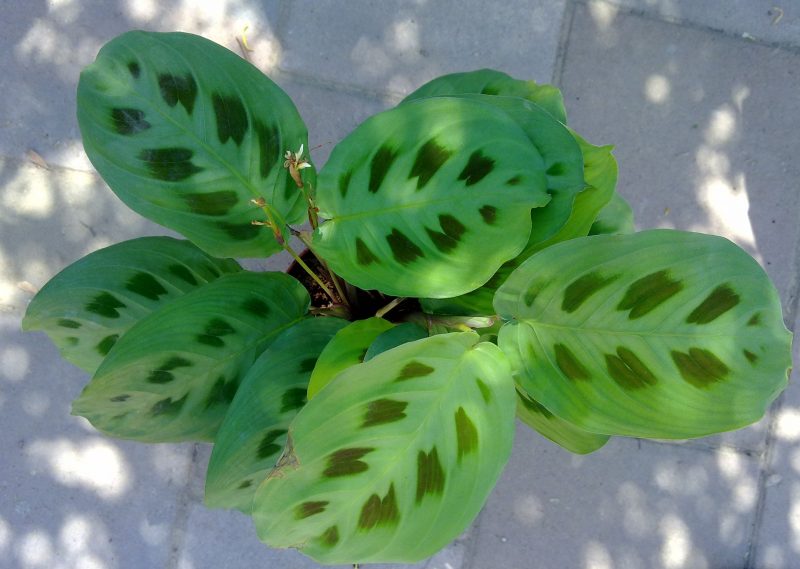
It is characterized by leaves, the upper side of which is decorated with a pattern of large eye-shaped or feather-like spots of deep green or brownish tint. The central vein is shaded by a light line. The underside is red with a blue overflow.
Inflorescences are small, white.
Arrowhead tricolor (tricolor or fascinator)

Spectacular appearance with medium-sized velvety leaves (length about 13 cm, width - 6 cm), colored in three tones. The main background is dark green. To the edges, it smoothly turns into light green. The central part is lowered by scarlet streaks and a light spotted pattern of feather-shaped. Bottom side with raspberry tint. Inflorescences are small, light lilac.
Arrowhead two-tone (bicolor)
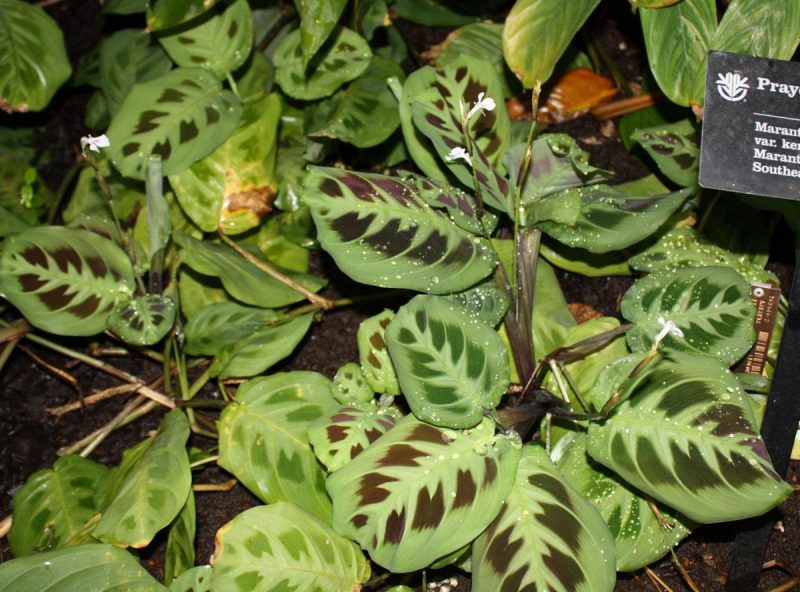
It is a compact bush formed by short shoots. The leaves are small (10-15 cm), oval or ovoid, smooth, with wavy edges and an original pattern of 2 shades. The green background of the upper part of the leaf dissects the central streak of silver color. Brownish spots are located on either side of it. The bottom of the leaf is reddish or purple.
Paniculate inflorescences of white, with lilac specks, color.
Reed Maranta
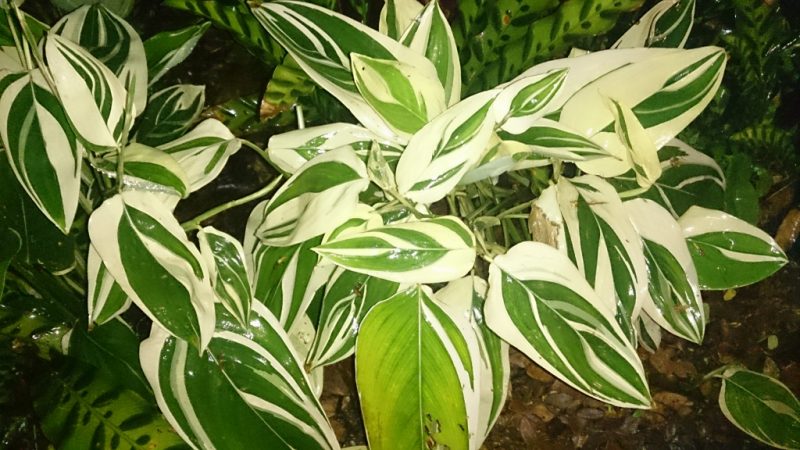
It differs in tall (more than a meter) thin shoots and large (up to 25 cm) leaves with an exquisite pattern of two harmoniously combined shades: dark green and grayish-gray.
It blooms in spring or summer, forming small small white buds.
Growing Features
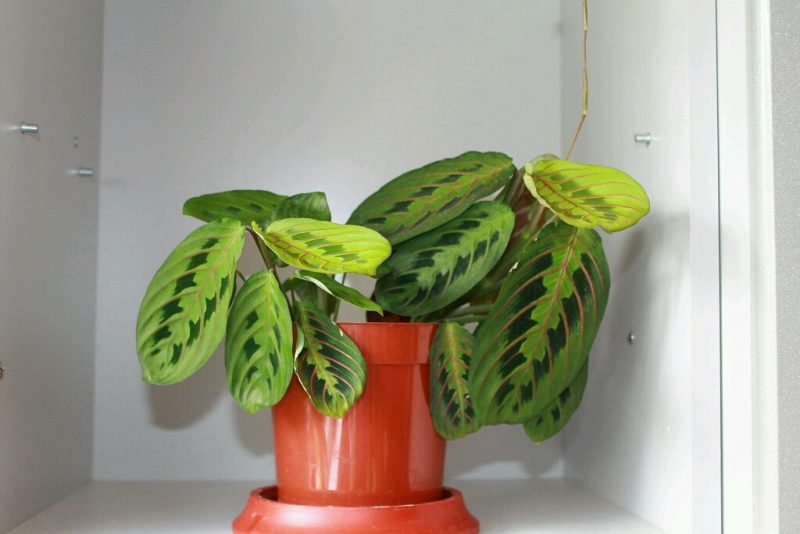
Maranta, despite its tropical origin, is quite simply grown.
For this flower it is important:
- conditions as close to natural as possible;
- seasonally appropriate watering regimen;
- regular top dressing.
Optimal conditions for growing arrowroot
- The flower is comfortable in partial shade or in diffused light, so it is placed on the eastern or western windows and even at some distance from the source of bright light. In winter, lighting is required.
- The plant needs warm (22-26 ° C) air and does not tolerate temperature fluctuations.
- Maranta needs air of high (from 70%) humidity. To achieve this: put the pot on a pallet filled with wet expanded clay; the flower is sprayed several times daily with soft water; once a month they arrange a “shower”, washing the leaves under a stream of water at room temperature, after covering the soil with polyethylene.
- “Prayer grass” requires a substrate that is correctly selected in structure and properties.
Soil requirements
Maranta prefers slightly acidic, air- and moisture-permeable loose nutrient soil. These properties correspond to the purchased substrate for arrowroot. To improve its structure and reduce the risk of pathogenic flora, a small amount of crushed charcoal is added to it.

With independent preparation, they mix garden and turf soil (1: 1) with washed sand (1 part), humus and sphagnum (½ part) and a small amount (1/4 part) of charcoal or coniferous substrate.
When a plant transplant is needed
The “prayer grass” has small and slowly growing roots, so the flower does not need frequent transplants.
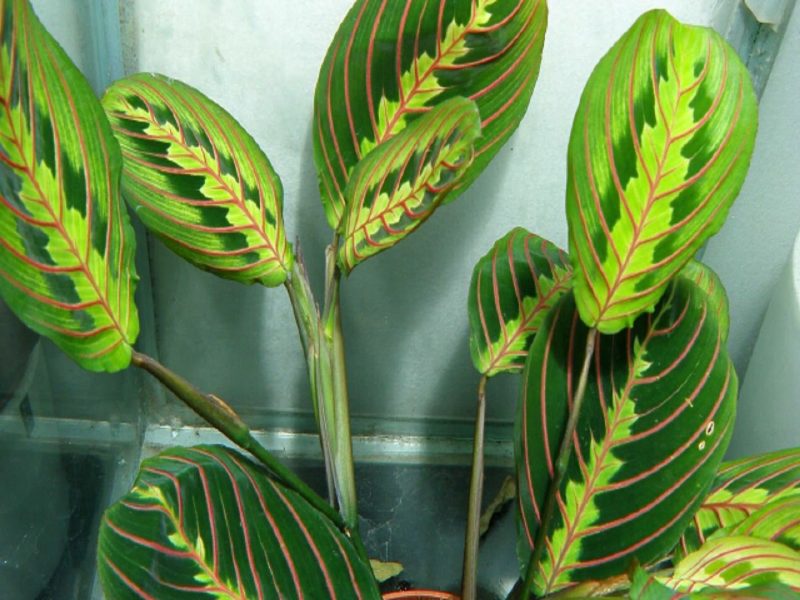
They are carried out no more than 1 time in 2-3 years if:
- the roots filled the entire volume of the pot;
- the bush needs rejuvenation;
- the flower looks painful, probably root damage.
The plant is transplanted into a new container and fresh substrate.
Pot recommendations
A wide shallow plastic or ceramic container with a drainage compartment and holes for water drainage is suitable for growing arrowroot.
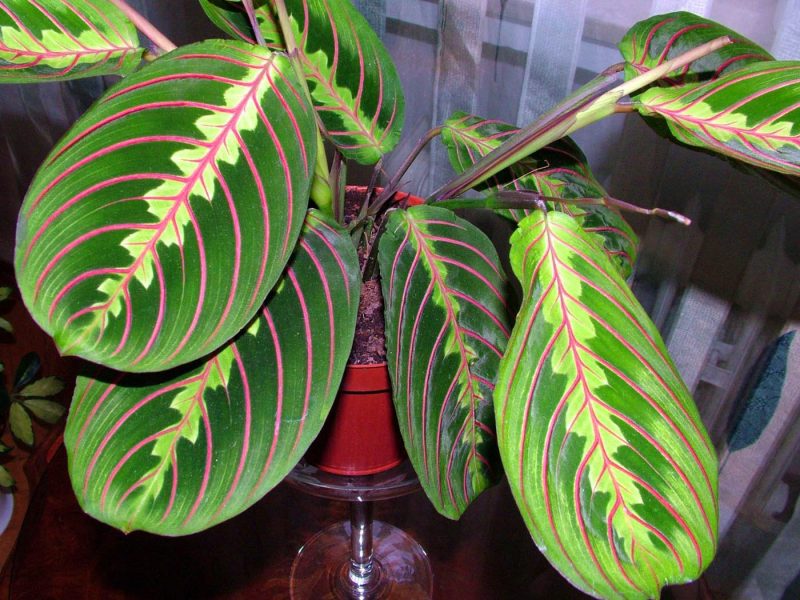
The new pot should slightly (1.5-2 cm) exceed the previous one in volume.
Transplant technique
The procedure is carried out in the spring. Before transplanting, the flower is abundantly watered.
Then:
- Removed from old container. If signs of trouble are found on the roots (rot, dry patches), all problem areas are removed with a sharp tool, followed by processing of the sections with carbon powder.
- A layer of drainage is placed at the bottom of the new pot.
- 1/3 of the substrate is poured over the drainage.
- An earthen lump is placed in the central part and the voids are filled with the remaining soil.
- A young plant is watered and sprayed.
The transplanted plant is organized a greenhouse, which will greatly accelerate its adaptation.
Maranta: home care
When creating suitable conditions, caring for the arrowroot will not require a lot of time and is to irrigate and fertilize.
Watering
Maranta is a moisture-loving plant, so it must be watered often and plentifully.
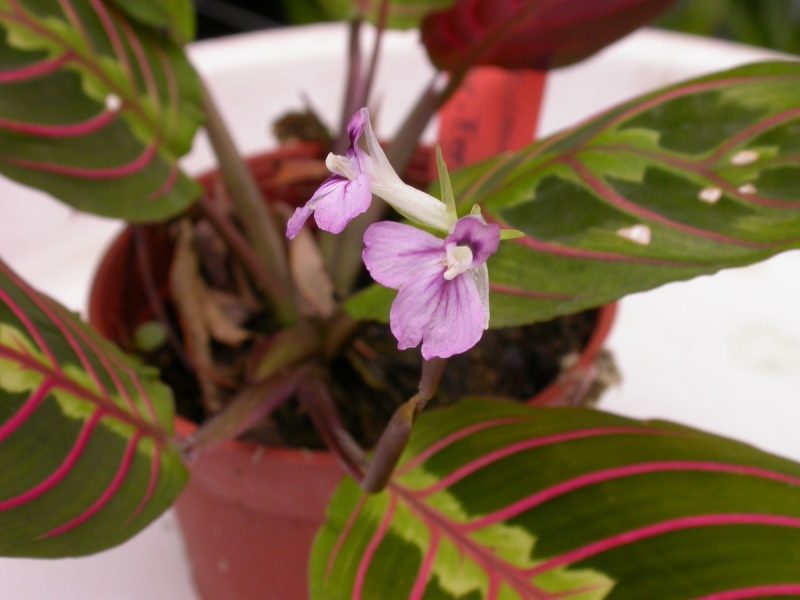
The frequency of humidification is determined by the season:
- in the spring-summer period - 2-3 times a week, preventing the land from completely drying out in a pot with a plant;
- in autumn and winter - 1-2 times, after drying of the upper soil layer.
For irrigation and spraying use settled water at room temperature, not containing impurities of chlorine and lime.
Top dressing
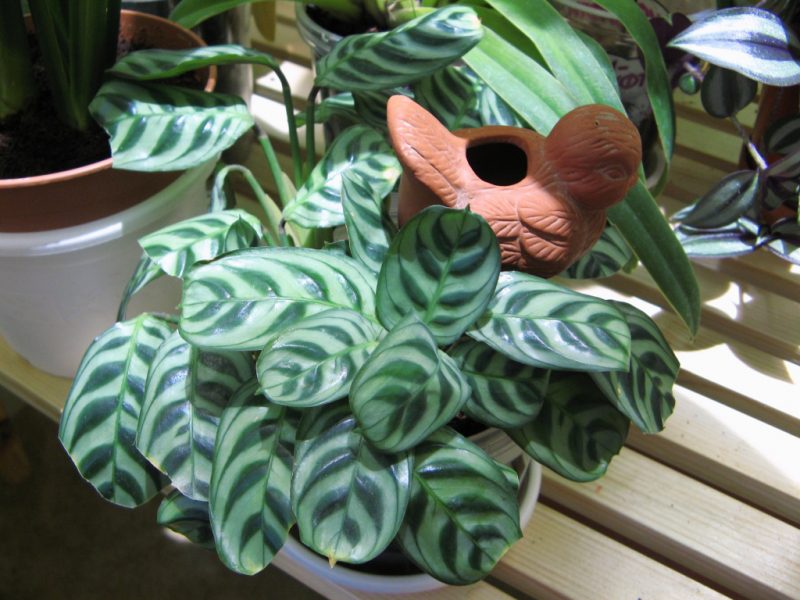
To maintain a high soil nutritional value, the arrowroot is regularly fed, once every 2 weeks, alternating with the use of mineral and organic fertilizers for decorative and deciduous plants.
Top dressing is always carried out after watering.
Flower propagation methods
At home, the “prayer grass” is propagated vegetatively: by dividing the bush and using cuttings.
Bush division
This is the easiest and most effective way to get new plants. It is suitable for the reproduction of adults and overgrown bushes.
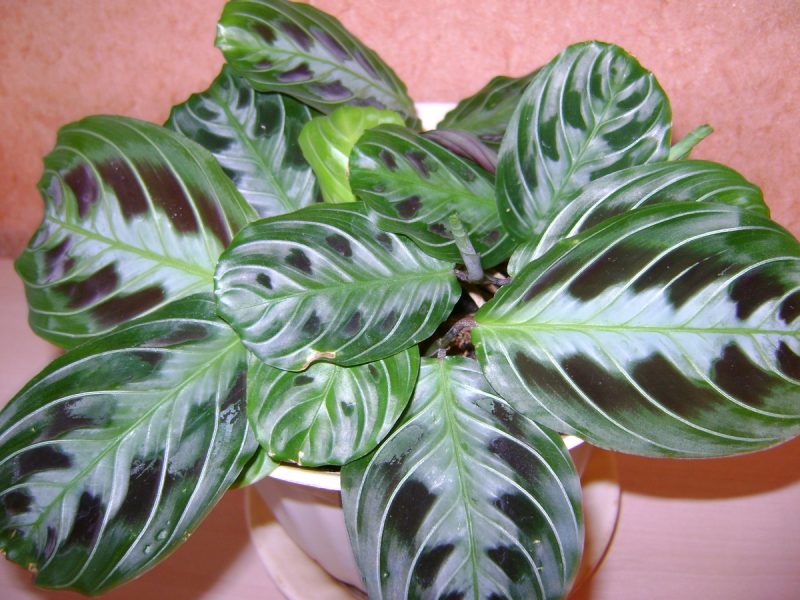
The bush is divided in the spring. It is convenient to combine this procedure with a transplant. They begin with abundant watering and subsequent extraction of an earthen coma from the tank.
After that:
- The roots are freed from the soil and inspected, removing all rotted or dried areas with subsequent disinfection of the slices.
- All dry, deformed or old shoots and leaves must be removed.
- The bush is divided into several parts, each of which should have independent roots and 1-2 shoots.
- Delenki are planted in separate containers in a substrate for adult forms and abundantly watered.
For quick rooting, seedlings organize a greenhouse: cover with any transparent, airtight material and put in a warm (23-25 ° C) moist place.
The flower will signal the successful acclimatization by the formation of new leaves and shoots. As soon as this happens, begin to harden.
For this:
- in the first 2-3 days, the film is removed for 5-10 minutes;
- later the procedure is carried out more often.
Cuttings
Arrowroot can be propagated by cuttings, which are used as shoot sections. Cuttings are harvested in spring or summer, until the beginning of September, cutting long (8-12 cm) lateral stems at an angle 1.5-2 cm below the knot. Each stalk must have at least 1 internode and 1-3 leaves.
Rooting is carried out in standing water at room temperature. Root growth occurs within a month.
Rooted cuttings are planted in the ground and kept in greenhouse conditions until the formation of new leaves and shoots. The protective film is removed only after hardening of young plants.
Pest and Disease Control
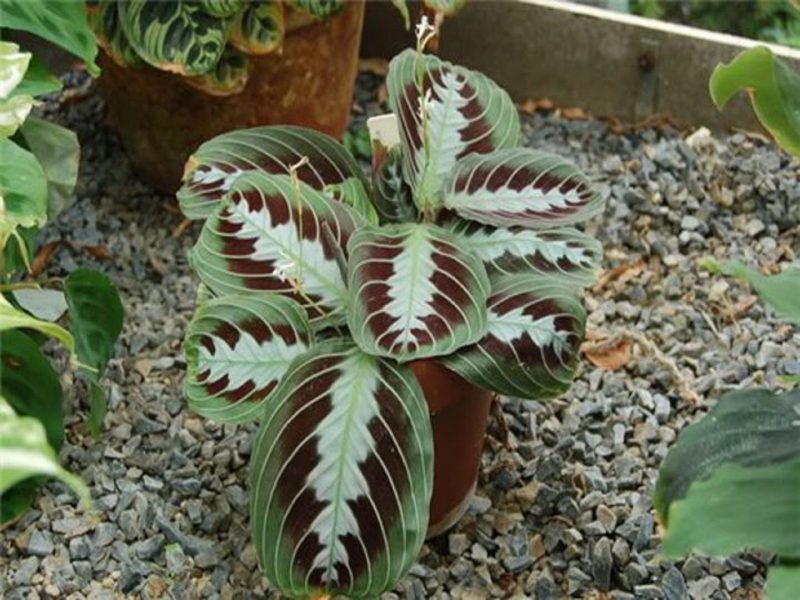
The arrowroot leaves attract sucking insects. The most dangerous are the mealybug, scale insects and the red spider mite.
- The defeat by the mealybug is diagnosed by the appearance of former loose formations in the axils of the leaves and internodes.
- The presence of scabies is indicated by the presence on the leaves and shoots of small dense plaques of dark color.
- The red spider mite settles on the underside of the leaves and forms a thin spider web.
To destroy sucking insects, the affected parts are treated with a solution of laundry soap (20 g per 1 liter of water), followed by washing in the shower. With a negligible result, the treatment with Actellic according to the instructions.
Paying attention, the flower will always respond with decorative foliage and unusual flowering.












